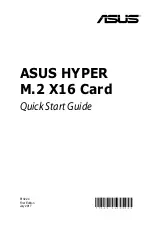
Glossary
ii
PEB383 User Manual
July 25, 2011
Integrated Device Technology, Inc.
Confidential - NDA Required
Message
A TLP used to communicate information outside of the memory, I/O, and configuration spaces.
Message TLPs are always posted, and may or may not contain data.
Non-transparent
addressing
This type of addressing is used by a PCI bridging device to isolate the primary address map from the
secondary address map. It provides address translation for PCI devices located in separate address
domains with multiple host processors. This mode of operation, which is sometimes called embedded
bridging, allows for distinct PCI memory spaces to be connected through defined windows with
address translation from one memory domain to another.
PCI extended capabilities
Optional features supported by the
PCI Local Bus Specification
. Some examples of extended
capabilities include: Vital Product Data, Message Signaled Interrupts, and Slot Numbering. A device
that supports extended capabilities uses a PCI capability list to access the features located in its PCI
configuration space.
Prefetchable memory
The process of prefetching memory occurs when a line of information from memory is read before a
bus master requests it. If a bus master later requests the memory line, the bus target can supply it
immediately. This type of memory access minimizes the time required to retrieve target memory.
Requester (PCIe)
The device that originates a PCIe transaction. A requester can be either a root complex or an endpoint
device.
Requester ID (PCIe)
This value uniquely identifies the requester of a transaction. It consists of a requester’s bus number,
device number, and function number.
Root complex
This is a type of PCIe device, or mode of operation, that connects a host processor and memory
sub-system to a PCIe fabric. The root complex generates transaction requests on behalf of the host
processor — such as configuration, memory, and I/O — to other devices in the PCIe hierarchy. It also
handles interrupts and power management events.
The root complex appears as P2P bridge(s) to the PCIe links, and can support one or more PCIe ports.
Transparent addressing
This type of PCI addressing is used by a bridging device to support configuration mapping but not
perform address translation between two buses. When a device is configured in transparent mode, it
provides standard PCI bus bridging support through its base and limit registers. These registers define
address decode windows for multiple bridges so that transactions can be passed transparently in a
system. This enables devices that are connected to multiple bridging devices to share a single, unified
address space.
Upstream port
A PCIe port that points in the direction of the root complex (for example, an endpoint port).



































